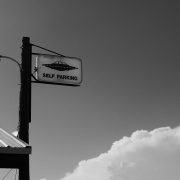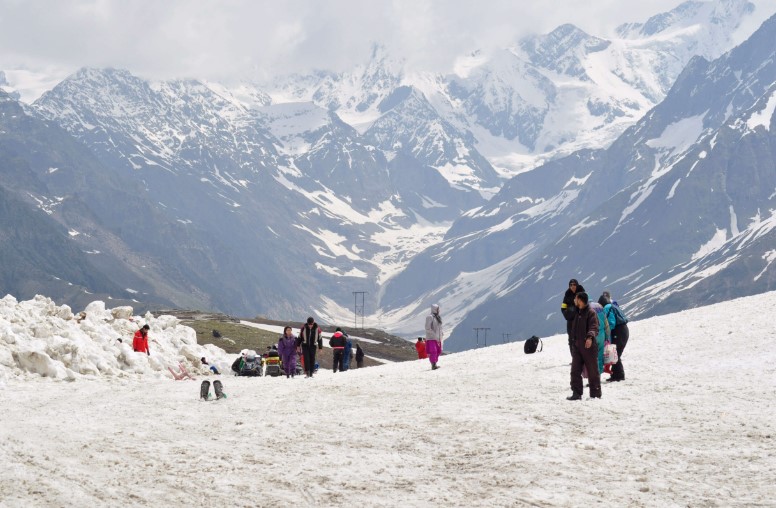Explore some of the most devastating natural disasters in history, from earthquakes to hurricanes, and the impact they had on human lives and the environment. Natural disasters are powerful and unpredictable events that can cause widespread destruction and loss of life. They can occur anywhere in the world and are often accompanied by a sense of fear and helplessness. These disasters can have a significant impact on the affected regions, leaving behind a trail of devastation and affecting the lives of millions of people.
Earthquakes, tsunamis, and hurricanes are among the most tragic and terrifying natural disasters that have occurred throughout history. These events can cause massive destruction and loss of life, leaving communities devastated and struggling to recover. The destructive power of earthquakes can result in collapsed buildings, landslides, and widespread infrastructure damage. Tsunamis, which are often triggered by underwater earthquakes, can unleash massive waves that can engulf coastal communities and cause immense devastation. Hurricanes, with their strong winds and storm surges, can wreak havoc on coastal areas, destroying homes and infrastructure.
Understanding the causes and effects of these natural disasters is crucial in order to better prepare for and mitigate their impact. By studying historical disasters and analyzing their causes, scientists and experts can develop early warning systems and evacuation plans to help save lives. Additionally, advancements in technology have enabled better tracking and forecasting of hurricanes, providing communities with valuable time to prepare and respond.
By exploring these natural disasters and their impact on human lives and the environment, we can gain a greater understanding of the forces of nature and the importance of preparedness. It is essential to learn from the past and take proactive measures to protect ourselves and our communities from the devastating effects of these tragic events. Through education, awareness, and preparedness, we can work towards building more resilient societies that are better equipped to face the challenges posed by natural disasters.
Earthquakes
Earthquakes are natural disasters that can cause widespread destruction and loss of life. They occur when there is a sudden release of energy in the Earth’s crust, resulting in seismic waves that shake the ground. The destructive power of earthquakes is immense, as they can cause buildings to collapse, landslides, and tsunamis.
The causes of earthquakes can vary, but they are often the result of tectonic plate movements. When two plates collide, slide past each other, or separate, it can create stress and strain on the Earth’s crust, leading to an earthquake. Other causes include volcanic activity and human-induced earthquakes, such as those caused by mining or hydraulic fracturing.
The consequences of earthquakes can be devastating. They can result in the loss of homes, infrastructure, and livelihoods. The impact on human lives can be immense, with injuries and fatalities occurring during the shaking and in the aftermath of the earthquake. Additionally, earthquakes can trigger secondary hazards, such as landslides and fires, further exacerbating the destruction.
It is crucial to understand the destructive power of earthquakes and the causes behind them to better prepare for and mitigate their impact. By studying seismic activity, scientists can develop methods to predict and monitor earthquakes, allowing for early warning systems and emergency preparedness. Building codes and infrastructure design can also be improved to withstand seismic forces, reducing the damage caused by earthquakes.
Tsunamis
Tsunamis are among the most terrifying natural disasters that can occur, with their immense force and devastating impact on coastal communities. These massive ocean waves are typically triggered by underwater earthquakes, volcanic eruptions, or landslides. When these events occur, they displace large volumes of water, causing the formation of powerful tsunami waves that can travel across entire ocean basins.
Once a tsunami wave reaches shallow water near the coast, it undergoes a process called shoaling, where the wave height increases dramatically. This is what makes tsunamis so destructive when they reach land. The immense force of the waves can cause widespread flooding, destruction of buildings and infrastructure, and loss of life.
The damage inflicted by tsunamis is often catastrophic, with entire communities being wiped out in a matter of minutes. Coastal regions are particularly vulnerable to tsunamis, as they are directly in the path of the waves. The impact on human lives, the environment, and the economy can be devastating, requiring long-term recovery and rebuilding efforts.
To better understand the terrifying force of tsunamis, it is crucial to study their formation and the factors that contribute to their destructive power. By understanding the causes and effects of tsunamis, we can work towards implementing effective prevention and preparedness measures to mitigate their impact on coastal communities.
Historical Tsunamis
Historical Tsunamis have left a lasting impact on human history, with some of the most devastating natural disasters in recorded history. Two of the most significant historical tsunamis include the 2004 Indian Ocean tsunami and the 2011 Tohoku tsunami.
The 2004 Indian Ocean tsunami, also known as the Boxing Day tsunami, struck on December 26, 2004. Triggered by a massive undersea earthquake off the coast of Sumatra, Indonesia, it unleashed a series of towering waves that ravaged coastal communities in 14 countries. The destruction was catastrophic, with an estimated death toll of over 230,000 people.
The 2011 Tohoku tsunami, also known as the Great East Japan earthquake and tsunami, was caused by a powerful undersea earthquake off the coast of Japan. The tsunami waves reached heights of up to 40 meters (131 feet) and traveled several kilometers inland, causing widespread devastation. The disaster claimed the lives of nearly 16,000 people and triggered a nuclear crisis at the Fukushima Daiichi Nuclear Power Plant.
| Tsunami | Year | Location | Deaths |
|---|---|---|---|
| 2004 Indian Ocean tsunami | 2004 | Indian Ocean | 230,000+ |
| 2011 Tohoku tsunami | 2011 | Japan | 15,897 |
These historical tsunamis serve as a stark reminder of the immense power and destructive force that tsunamis can unleash upon coastal communities. They highlight the urgent need for effective early warning systems, preparedness measures, and disaster response strategies to minimize the loss of human lives and mitigate the devastating impact of future tsunamis.
Causes and Effects
Tsunamis, one of the most terrifying natural disasters, are caused by a variety of factors, with underwater earthquakes and volcanic eruptions being the primary triggers. When an earthquake occurs beneath the ocean floor, it displaces a massive amount of water, resulting in the formation of powerful tsunami waves. Similarly, volcanic eruptions can also generate tsunamis by displacing water through the release of gases, ash, and lava into the surrounding ocean.
Once these tsunami waves are formed, they travel across the ocean at incredible speeds, reaching the shoreline with devastating force. The impact of a tsunami on land is catastrophic, resulting in widespread destruction of buildings, infrastructure, and coastal communities. The immense power of the waves can cause massive flooding, sweeping away everything in their path and leaving behind a trail of destruction.
Furthermore, tsunamis can also have long-lasting effects on the environment. The force of the waves can lead to coastal erosion, altering the shape of coastlines and causing significant changes to marine ecosystems. The destruction caused by tsunamis can also result in the displacement of populations, loss of lives, and economic devastation for affected regions.
In order to mitigate the devastating effects of tsunamis, it is crucial to have early warning systems in place that can detect seismic activity and issue alerts to coastal communities. Additionally, educating the public about the signs and dangers of tsunamis, as well as implementing evacuation plans, can help minimize the loss of lives and property.
Prevention and Preparedness
Prevention and Preparedness
When it comes to tsunamis, prevention and preparedness play a crucial role in minimizing the loss of life and property. Governments and organizations around the world have implemented various measures to ensure the safety of coastal communities.
Early Warning Systems:
One of the most important aspects of tsunami prevention is the establishment of early warning systems. These systems use a network of seismographs and ocean sensors to detect earthquakes and monitor sea levels. When a potential tsunami is detected, alerts are immediately issued to authorities and the public, allowing for timely evacuations and emergency response.
Evacuation Plans:
Evacuation plans are crucial in ensuring the safety of people living in tsunami-prone areas. These plans include designated evacuation routes, safe assembly points, and clear instructions on how to respond to tsunami warnings. Regular drills and educational campaigns are conducted to raise awareness and ensure that communities are well-prepared to evacuate in a timely and organized manner.
Infrastructure Development:
Building resilient infrastructure is another important aspect of tsunami prevention. Coastal areas are equipped with tsunami-resistant buildings and structures, such as seawalls and breakwaters, to minimize the impact of tsunamis. Additionally, land-use planning and zoning regulations are implemented to prevent the construction of critical infrastructure in high-risk areas.
Public Education:
Public education plays a vital role in tsunami preparedness. Governments and organizations conduct awareness campaigns to educate the public about the signs of a tsunami, the importance of early warning systems, and the necessary steps to take in the event of a tsunami warning. This includes teaching people how to recognize natural warning signs, such as strong ground shaking or the sudden receding of the ocean.
By combining these preventive measures and preparedness strategies, communities can better protect themselves from the devastating impact of tsunamis. It is essential to continuously improve and update these measures to ensure the safety and resilience of coastal areas.
Recent Tsunamis
Recent tsunamis have left a lasting impact on the affected regions, causing widespread destruction and loss of life. One such tsunami occurred in 2018 in Sulawesi, Indonesia. Triggered by a powerful earthquake, the tsunami struck the coastal city of Palu, leaving behind a trail of devastation. The massive waves swept away buildings, homes, and infrastructure, claiming thousands of lives and displacing countless others.
In 2019, another devastating tsunami hit the Bahamas, specifically the Abaco Islands and Grand Bahama. This tsunami, known as the Dorian tsunami, was a result of Hurricane Dorian, one of the strongest hurricanes ever recorded in the Atlantic. The storm surge caused by the hurricane led to massive flooding and destruction in these areas, leaving communities in ruins and causing a humanitarian crisis.
Both the Sulawesi and Dorian tsunamis serve as stark reminders of the destructive power of these natural disasters. The affected regions faced immense challenges in the aftermath, including the need for emergency aid, reconstruction efforts, and support for the affected communities. These recent tsunamis highlight the importance of preparedness, early warning systems, and disaster response strategies to mitigate the impact of such events in the future.
Hurricanes
Hurricanes are powerful and destructive natural disasters that wreak havoc on coastal areas. These massive storms are formed over warm ocean waters and are characterized by strong winds and heavy rainfall. The destructive power of hurricanes is primarily attributed to their winds, which can reach speeds of over 100 miles per hour, and their storm surges, which can cause widespread flooding.
The formation of hurricanes begins with a combination of warm ocean waters, moisture, and atmospheric instability. As warm air rises from the ocean surface, it creates an area of low pressure. This low-pressure system then draws in more warm air and moisture, causing the formation of thunderstorms. As these thunderstorms organize and strengthen, they can develop into a tropical cyclone, which is the precursor to a hurricane.
Once a hurricane forms, it can travel across the ocean, gaining strength and intensity. The destructive power of hurricanes is most evident in their winds, which can uproot trees, damage buildings, and cause widespread power outages. Additionally, the storm surges associated with hurricanes can cause coastal flooding, leading to significant damage to infrastructure and displacement of communities.
To better understand the impact of hurricanes, it is important to consider some of the most famous hurricanes in history. Hurricane Katrina, which struck the Gulf Coast of the United States in 2005, caused widespread devastation and resulted in the loss of thousands of lives. Similarly, Hurricane Harvey, which hit Texas in 2017, caused catastrophic flooding and extensive damage to homes and infrastructure.
Tracking and forecasting hurricanes has become increasingly sophisticated over the years. Meteorologists use a combination of satellite imagery, computer models, and historical data to predict the path and intensity of hurricanes. This information is crucial for issuing timely warnings and ensuring that communities can evacuate or take necessary precautions.
In conclusion, hurricanes are formidable natural disasters that pose a significant threat to coastal areas. The destructive power of their winds and storm surges can result in widespread devastation and loss of life. Understanding their formation and tracking methods is essential for preparedness and response efforts. By staying informed and taking appropriate measures, we can minimize the impact of hurricanes and protect lives and property.
Famous Hurricanes
Famous Hurricanes
When it comes to devastating natural disasters, few can match the destructive power of hurricanes. Let’s take a closer look at some of the most famous hurricanes in history, including Hurricane Katrina and Hurricane Harvey, and the immense destruction they caused.
Hurricane Katrina, which struck the Gulf Coast of the United States in 2005, is often considered one of the deadliest and costliest hurricanes in American history. With winds reaching up to 175 mph, this Category 5 hurricane caused widespread flooding and destruction in New Orleans and the surrounding areas. The storm surge breached levees, leading to catastrophic flooding that left thousands of people stranded and caused the loss of over 1,200 lives.
Another infamous hurricane is Hurricane Harvey, which made landfall in Texas in 2017. This Category 4 hurricane brought record-breaking rainfall and caused severe flooding in Houston and other parts of southeastern Texas. The storm dumped over 60 inches of rain in some areas, leading to widespread devastation and the displacement of thousands of people. The economic impact of Hurricane Harvey was estimated to be around $125 billion, making it one of the costliest hurricanes in history.
These two examples highlight the immense power and destructive capabilities of hurricanes. They serve as a reminder of the importance of preparedness and response in the face of these natural disasters. By understanding the history and impact of famous hurricanes like Katrina and Harvey, we can better equip ourselves to mitigate the damage caused by future storms.
Tracking and Forecasting
Tracking and forecasting hurricanes is crucial in order to better prepare for and respond to these devastating natural disasters. Advanced technology and methods are employed to monitor and predict the movement and intensity of hurricanes, providing valuable information to authorities and communities at risk.
One of the key technologies used in tracking hurricanes is satellite imagery. Satellites equipped with powerful sensors and cameras capture high-resolution images of the Earth’s atmosphere, allowing meteorologists to closely monitor the formation and development of hurricanes. These images provide valuable data on the size, shape, and movement of the storm, enabling accurate tracking and forecasting.
In addition to satellite imagery, meteorologists also rely on weather radar systems to track hurricanes. Weather radars use radio waves to detect precipitation within a storm system, providing detailed information about the storm’s structure and intensity. This data is crucial for accurately predicting the path and strength of a hurricane, helping authorities issue timely warnings and evacuation orders.
To further enhance hurricane tracking and forecasting, computer models are utilized. These models take into account various atmospheric conditions and historical data to simulate the behavior of hurricanes. By running multiple simulations, meteorologists can generate forecasts that indicate the possible tracks and intensities of hurricanes, providing valuable guidance for emergency response planning.
Furthermore, specialized hurricane hunter aircraft are deployed to gather real-time data from within the storm. These aircraft fly directly into the hurricane, collecting information on wind speed, temperature, humidity, and air pressure. This data is then transmitted to meteorological centers, where it is incorporated into forecasting models, improving the accuracy of predictions.
Overall, the combination of satellite imagery, weather radar systems, computer models, and hurricane hunter aircraft play a vital role in tracking and forecasting hurricanes. By harnessing these advanced technologies and methods, authorities and communities can better prepare for the impact of these natural disasters, enabling timely evacuation and response efforts to save lives and minimize damage.
Frequently Asked Questions
- What causes earthquakes?
Earthquakes are caused by the sudden release of energy in the Earth’s crust. This energy is usually the result of tectonic plate movements or volcanic activity.
- How do tsunamis form?
Tsunamis are typically generated by underwater earthquakes, volcanic eruptions, or landslides. These events displace large volumes of water, creating powerful waves that can travel across oceans.
- What are the effects of tsunamis?
Tsunamis can cause widespread destruction in coastal areas, including flooding, damage to infrastructure, and loss of life. The force of the waves can be devastating, reaching far inland.
- How can we prevent tsunamis?
While it is not possible to prevent tsunamis from occurring, early warning systems and evacuation plans can help reduce the impact. Building resilient coastal structures and educating communities about tsunami preparedness are also crucial.
- What is the difference between a hurricane and a typhoon?
The only difference between a hurricane and a typhoon is the location where they occur. Hurricanes are tropical cyclones that form over the Atlantic Ocean or the eastern Pacific Ocean, while typhoons occur in the western Pacific Ocean.
- How are hurricanes tracked and forecasted?
Meteorologists use various tools, such as satellites, radar systems, and computer models, to track and forecast hurricanes. This helps in predicting their path, intensity, and potential impact, allowing for better preparation and response.
- What were the most destructive hurricanes in history?
Hurricane Katrina, which struck the Gulf Coast of the United States in 2005, and Hurricane Harvey, which hit Texas in 2017, are among the most destructive hurricanes on record. They caused widespread devastation and resulted in significant loss of life.









